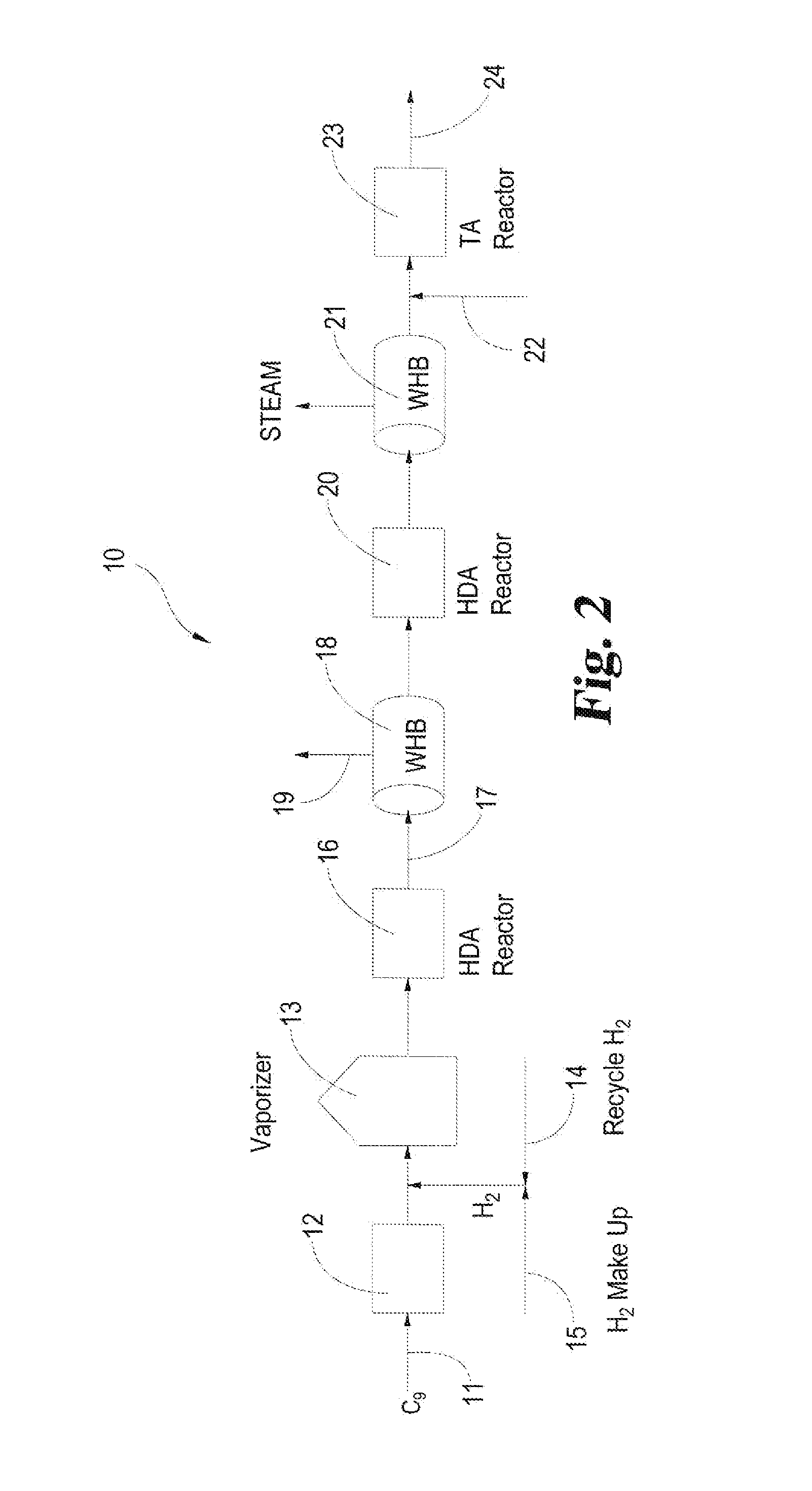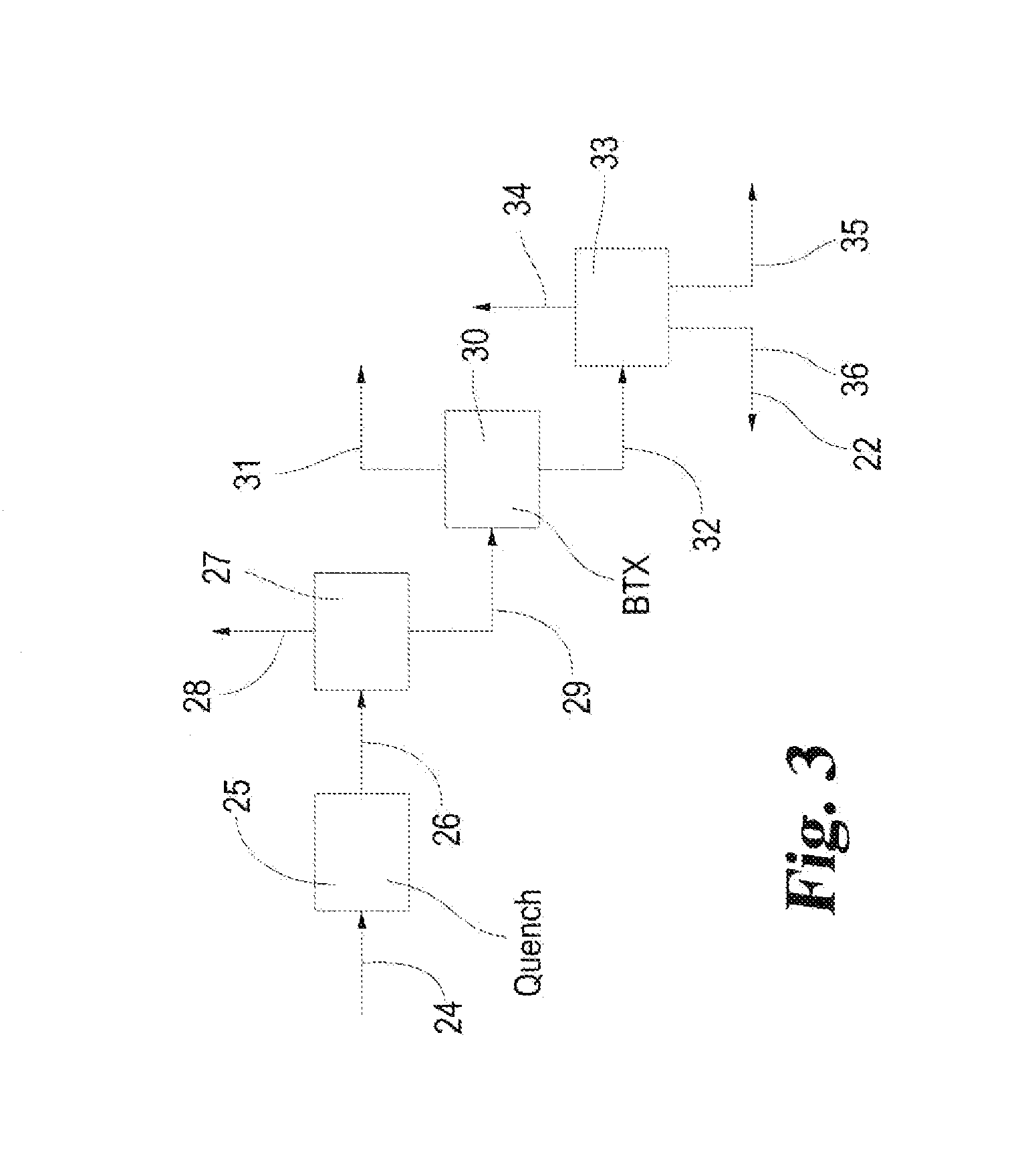Treating c8-c10 aromatic feed streams to prepare and recover trimethylated benzenes
a trimethylated benzene and aromatic feed technology, applied in the field of c9 aromatic rich streams, can solve the problems that the technology does not meet the need for high octane fuels, and achieve the effects of increasing the octane number of the refinery stream, increasing the aromatic content, and increasing the severity
- Summary
- Abstract
- Description
- Claims
- Application Information
AI Technical Summary
Benefits of technology
Problems solved by technology
Method used
Image
Examples
example 1
[0058]The present invention is useful with a variety of C9 aromatic streams, including those obtained directly from a reformer. By way of example, a C9 stream from catalytic reforming was analyzed for chemical composition and was found to contain the components as set forth in Table 2.
TABLE 3Reformate Sample (C8, C9 & C10 Aromatic Stream)95-63-61,2,4-trimethyl-benzene38.174%611-14-31-ethyl-2-methyl-benzene17.316%622-96-81-ethyl-4-methyl-benzene8.537%526-73-81,2,3-trimethyl-benzene7.280%108-67-81,3,5-trimethyl-benzene5.520%108-38-31,3-dimethyl-benzene3.097%141-93-51,3-diethyl-benzene2.779%873-49-4cyclopropyl-benzene2.088%2870-04-42-ethyl-1,3-dimethyl-benzene 2.036%1074-43-71-methyl-3-propyl-benzene1.561%933-98-21-ethyl-2,3-dimethyl-benzene 1.230%95-93-2 1,2,4,5-tetramethyl-benzene1.050%874-41-91-ethyl-2,4-dimethyl-benzene 1.011%103-65-1propyl-benzene0.915%95-93-21,2,4,5-tetramethyl-benzene0.715%535-77-3m-Cymene0.697%135-98-8S-Butyl-benzene0.657%488-23-31,2,3,4-tetramethyl-benzene0.47...
PUM
| Property | Measurement | Unit |
|---|---|---|
| temperature | aaaaa | aaaaa |
| pressure | aaaaa | aaaaa |
| MON | aaaaa | aaaaa |
Abstract
Description
Claims
Application Information
 Login to View More
Login to View More - R&D
- Intellectual Property
- Life Sciences
- Materials
- Tech Scout
- Unparalleled Data Quality
- Higher Quality Content
- 60% Fewer Hallucinations
Browse by: Latest US Patents, China's latest patents, Technical Efficacy Thesaurus, Application Domain, Technology Topic, Popular Technical Reports.
© 2025 PatSnap. All rights reserved.Legal|Privacy policy|Modern Slavery Act Transparency Statement|Sitemap|About US| Contact US: help@patsnap.com



